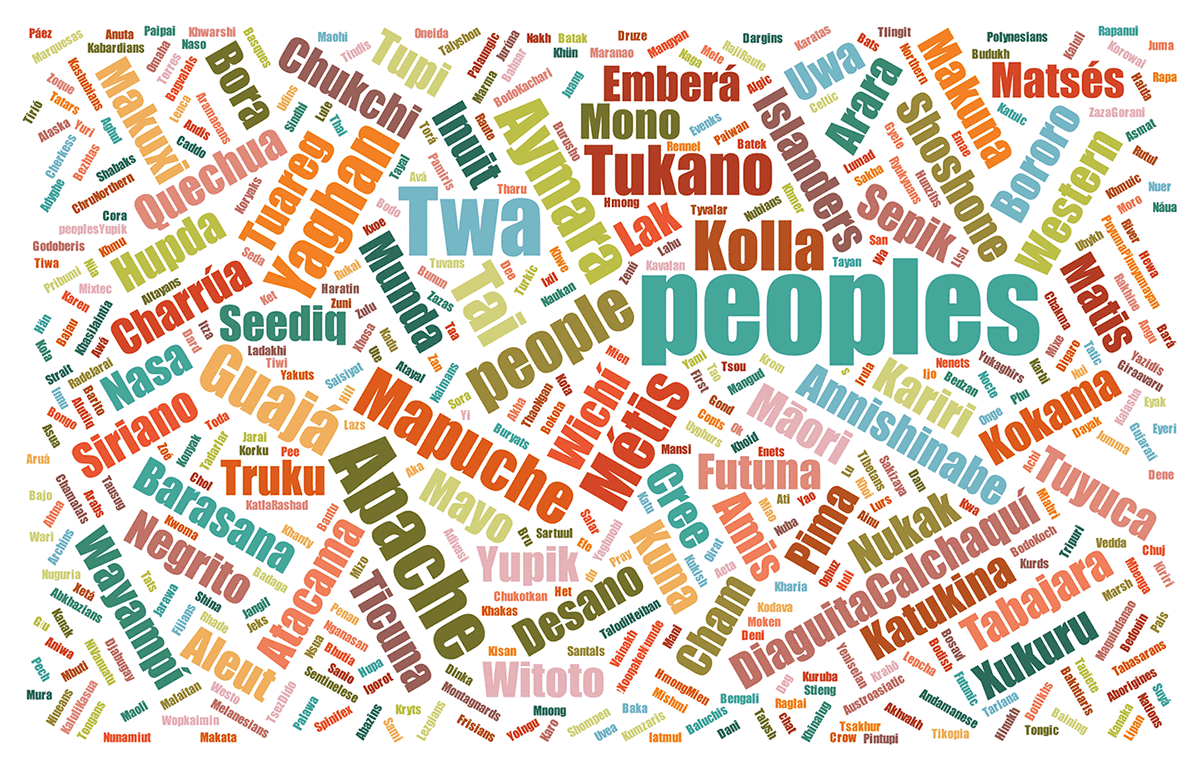
It is no coincidence that 80 percent of the earth’s biodiversity is found on Indigenous lands. It is because of Indigenous people’s stewardship and relationship with the environment. | Read the full text here: https://www.culturalsurvival.org/issues >>
However, governments in Indigenous Peoples’ homelands and multinational corporations too often violate Indigenous Peoples’ rights by operating in their territories without their Free, Prior and Informed Consent… Often culturally, linguistically and geographically separate from mainstream cultures, Indigenous Peoples lack the financial resources and access to decision-making platforms to demand a voice at the table and ensure that their best interests are represented. Indigenous Peoples, having exhausted avenues in seeking justice and protection of their rights at the national level, can choose to seek international pressure and attention to their plights.
Called Tribal Peoples, First Peoples, Native Peoples, and Indigenous Peoples, these original inhabitants call themselves by many names in their 4,000 + unique languages and constitute about 5% of the world’s population.
There are approximately 370 million Indigenous people in the world, belonging to 5,000 different groups, in 90 countries worldwide. Indigenous people live in every region of the world, but about 70% of them live in Asia.
There is no universally accepted definition for “Indigenous,” though there are characteristics that tend to be common among Indigenous Peoples:
Indigenous People are distinct populations relative to the dominant post-colonial culture of their country. They are often minority populations within the current post-colonial nations states. In Bolivia and Guatemala Indigenous people make up more than half the population.
Indigenous People usually have (or had) their own language, cultures, and traditions influenced by living relationships with their ancestral homelands. Today, Indigenous people speak some 4,000 languages.
Indigenous People have distinctive cultural traditions that are still practiced.
Indigenous People have (or had) their own land and territory, to which they are tied in myriad ways.
Indigenous People self-identify as Indigenous.
Examples of Indigenous Peoples include the Inuit of the Arctic, the White Mountain Apache of Arizona, the Yanomami and the Tupi People of the Amazon, traditional pastoralists like the Maasai in East Africa, and tribal peoples like the Bontoc people of the mountainous region of the Philippines. […]
Indigenous Peoples and the Environment
It is estimated that Indigenous territories contain 80 percent of the earth’s biodiversity. Indigenous lands also hold unquantified megatons of sequestered carbon as 11% of the planet’s forests are under their guardianship. These regions face an unprecedented and rapid loss of biodiversity and climate change effects resulting from the fossil fuel-based industrialized global economy and natural resource extraction. Many traditional Indigenous lands have become biodiversity “hotspots.” For Indigenous Peoples, conservation of biodiversity is an integral part of their lives and is viewed as spiritual and functional foundations for their identities and cultures. It is no coincidence that when the World Wildlife Fund listed the top 200 areas with the highest and most threatened biodiversity, they found that 95 percent are on Indigenous territories. […]
Our Mission
Cultural Survival advocates for Indigenous Peoples’ rights and supports Indigenous communities’ self-determination, cultures and political resilience, since 1972.
Our Vision
Cultural Survival envisions a future that respects and honors Indigenous Peoples’ inherent rights and dynamic cultures, deeply and richly interwoven in lands, languages, spiritual traditions, and artistic expression, rooted in self-determination and self-governance.
Source: Issues
URL: https://www.culturalsurvival.org/issues
Date accessed: 19 October 2018
Related posts